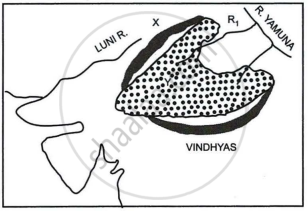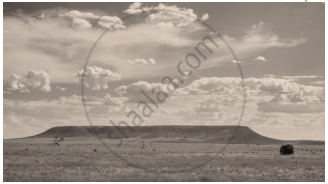Advertisements
Advertisements
प्रश्न
Answer the following question.
Give three differences between the Western and the Eastern Himalayas.
उत्तर
Differences between the Western and the Eastern Himalayas
Western Himalayas
- The Western Himalayas lies to the west of 86°W longitude, between the Indus and the Kali rivers.
- It rises gradually in a series of ranges.
- The average rainfall is less than 100 cm.
- Vegetation is mainly alpine and coniferous.
Eastern Himalayas
- The Eastern Himalayas lies to the east of 88°E longitude, between Tista and Brahma Putra rivers.
- It rises abruptly from the plains of Bihar and West Bengal.
- The average rainfall is more than 200 cm.
- Vegetation is mainly dense evergreen.
APPEARS IN
संबंधित प्रश्न
Briefly explain the geological evolution of the Himalayas.
Name any two standard geological eras, along with their duration.
Mention any two characteristic features of the Peninsular Plateau of India.
Answer the following question:
Briefly explain the geological evolution of the peninsular plateau.
Name the following :
A historic place in Rajasthan.
Study the sketch map given below and answer the questions that follow:

- Identify the dotted region marked Y. Mention any three of its characteristic features.
- Name the mountain range marked X, the river marked R1 and the type of rock that constitutes the dotted region.
Study the sketch map given below and answer the questions that follow:

- State the direction of the movement of the jetstreams A and B in the Indian region. Give reasons for the same.
- How do the jetstreams A and B influence the Indian climate?
Assertion: The Himalayas were formed due to the collision of tectonic plates.
Reason: Indian plate moved northwards and pushed beneath the Eurasian Plate leading to the compression of sediments in the Tethys Sea.
India is referred to as a sub-continent. Justify.
Identify the image given below and explain the formation of this geological division in India.

